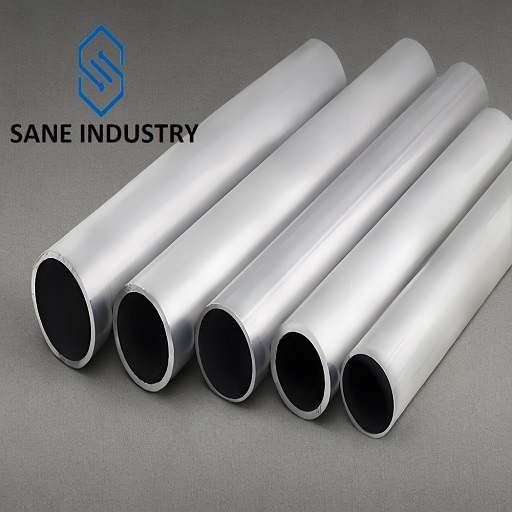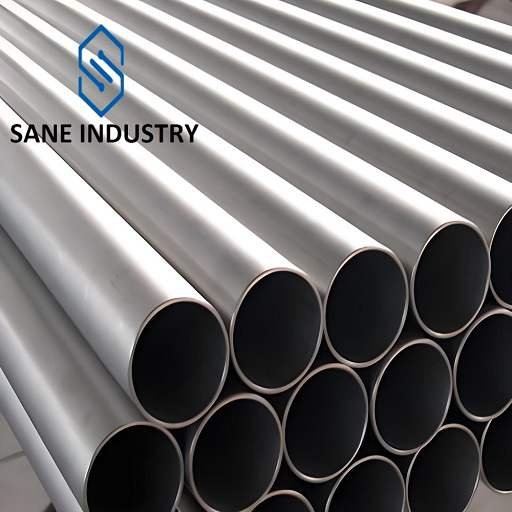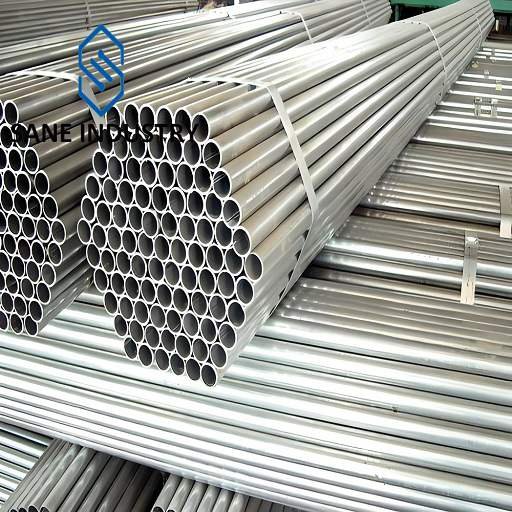What is an Aluminum Tube
An aluminum tube(also known as aluminum pipe) is a hollow, cylindrical structure crafted from aluminum or aluminum alloys. It is widely used across industries due to its unique combination of lightweight properties, corrosion resistance, and versatility in fabrication. Aluminum tubes come in various shapes (round, square, rectangular) and sizes, tailored to meet specific functional requirements.
Aluminum Tube Types
- Based on Shape
- Aluminum Round Tube: Cylindrical hollow profiles with uniform wall thickness, widely used in fluid transport, structural frameworks, and machinery.
- Aluminum Square Tube: Rectangular cross-sections ideal for architectural frameworks, furniture, and lightweight structural support.
- Aluminum Rectangular Tube: Similar to square tubes but with varying length-to-width ratios, suitable for industrial equipment and automotive parts.
- Aluminum Patterned Tube: Surface-embossed designs (e.g., grooves, textures) for decorative purposes or improved grip in handrails and consumer goods.
- Custom/Complex Profiles: Tailored shapes like oval, hexagonal, or asymmetrical designs for specialized industrial or aerospace applications.
- Based on Manufacturing Method
- Seamless Aluminum Tubes: Produced via extrusion or cold drawing without welds, offering high strength and uniformity for high-pressure systems (e.g., hydraulics, aerospace).
- Welded Aluminum Tubes: Formed by rolling and welding aluminum sheets, cost-effective for large-diameter applications like HVAC ducts or low-pressure plumbing.
- Based on Precision
- Standard Aluminum Tubes: General-purpose tubes with moderate dimensional tolerance for construction, automotive, and household uses.
- Precision Aluminum Tubes: Tight tolerances and smooth surfaces achieved through secondary processes (e.g., cold drawing), used in precision machinery, medical devices, and optical equipment.
- Based on Wall Thickness
- Thin-Wall Aluminum Tubes: Lightweight with reduced material use, common in packaging, electronics, and lightweight structural components.
- Thick-Wall Aluminum Tubes: Robust construction for high-stress environments like load-bearing columns or industrial machinery.
What are the advantages of Aluminum Tubes?
Lightweight & Durable: Aluminum’s low density (~2.7 g/cm³) reduces weight without compromising structural integrity, ideal for aerospace, automotive, and portable applications.
Corrosion Resistance: Naturally forms a protective oxide layer, resisting rust and chemical degradation, even in harsh environments like marine or pharmaceutical systems.
Recyclability: Fully recyclable with minimal energy input, supporting sustainable manufacturing and reducing environmental impact.
Thermal & Electrical Conductivity: Efficient for heat exchangers, radiators, and electrical conduits due to high thermal/electrical performance.
Ease of Fabrication: Easily extruded, welded, bent, or machined into complex shapes (round, square, rectangular) for diverse industrial and consumer uses.
Versatility: Available in alloys like 3003, 6061, and 7075 to meet specific strength, ductility, or corrosion-resistance requirements.
Cost-Effectiveness: Lower lifecycle costs compared to steel or plastic due to durability, low maintenance, and recyclability.
Aesthetic Flexibility: Anodized or coated surfaces enhance appearance for architectural or consumer products like furniture and cosmetics packaging.
What are the disadvantages of Aluminum Tubes?
Lower Strength vs. Steel: Aluminum alloys generally lack the tensile strength of steel, limiting use in ultra-high-stress or heavy-load applications without thicker walls or reinforcements.
Higher Cost: Raw aluminum is more expensive than materials like PVC or mild steel, impacting initial budgets despite long-term savings.
Thermal Expansion: High thermal expansion coefficient (~23 µm/m·K) risks deformation in systems with extreme temperature fluctuations (e.g., pipelines).
Connection Challenges: Requires specialized welding (TIG/MIG) or adhesives; threading aluminum tubes is difficult due to its softness.
Surface Damage: Prone to scratches or dents during handling, affecting aesthetics and structural integrity in precision applications.
Limited High-Temperature Use: Softens at temperatures above 400°F (204°C), reducing load-bearing capacity in high-heat environments.
Galvanic Corrosion Risk: Direct contact with dissimilar metals (e.g., copper, steel) in corrosive environments accelerates degradation without insulation.
Low-Temperature Brittleness: Some alloys may become brittle in cryogenic conditions, requiring alloy-grade optimization.
How are Aluminum Tubes made
- Material Selection
- Aluminum alloys (e.g., 2xxx series for high strength or 6xxx series like 6061-T6 and 6063 for corrosion resistance) are chosen based on application needs.
- Extrusion
- Heated aluminum billets are forced through a shaped die to create hollow profiles (round, rectangular, or custom cross-sections).
- Produces seamless tubes with uniform wall thickness, ideal for structural or precision applications.
- Cold Drawing (Optional)
- Extruded tubes may undergo cold drawing to refine dimensions, improve surface finish, and enhance mechanical properties.
- Achieves tight tolerances for precision machinery or medical equipment.
- Welding (Welded Tubes)
- Aluminum sheets are rolled into cylindrical forms and welded along seams using TIG/MIG techniques.
- Cost-effective for large-diameter or thin-walled tubes in HVAC or plumbing.
- Surface Treatment
- Anodizing: Electrochemical process to boost corrosion resistance and aesthetics, common in architectural or marine tubes.
- Coatings: Lacquered or printed surfaces for decorative or functional purposes, such as cosmetics packaging.
- Cutting and Finishing
- Tubes are precision-cut to specified lengths and further shaped (e.g., bending, flaring) for end uses like automotive frames or refrigeration systems.
- Quality Assurance
- Rigorous testing for dimensional accuracy, pressure tolerance, and surface integrity ensures compliance with industry standards.
What is Aluminum Tube used for?
Structural Engineering:
- Building frameworks, scaffolding, and support beams due to lightweight strength and corrosion resistance.
Transportation:
- Aerospace: Fuel lines, hydraulic systems, and aircraft fuselage components.
- Automotive: Radiators, exhaust systems, and chassis reinforcements.
HVAC & Plumbing:
- Ductwork, refrigerant lines, and water supply pipes for durability and thermal conductivity.
Energy & Renewables:
- Solar panel frames, heat exchangers in power plants, and wind turbine components.
Medical & Pharmaceutical:
- Sterile packaging, oxygen tanks, and medical device housings (non-reactive and easy to sterilize).
Consumer Goods:
- Collapsible cosmetic tubes, beverage cans, and sports equipment (e.g., bike frames, camping gear).
Industrial Machinery:
- Pneumatic systems, hydraulic cylinders, and conveyor rollers for wear resistance and precision.
Marine Applications:
- Boat railings, masts, and offshore platform piping (saltwater corrosion resistance).
Electrical Systems:
- Conduits for wiring and busbars due to conductivity and shielding properties.
Our Aluminum Tube Sizes and Material
| Outside Diameter | 4 to 273 mm | 1/8” to 10” NPS |
| Wall Thickness | 0.4 to 35 mm | 0.01” to 1.38” |
| Length | Customized | |
| Type of End | Plain Ends, Beveled Ends | |
| Material Grade | Standard: ASTM B210, ASTM B221, ASTM B241/B241M, ASTM B429/B429M, ASTM B483/B483M, etc. Grade: 1060, 1100, 2011, 2014, 2024, 3003, 3303, 5052, 5086, 6005, 6041, 6061, 6063, 6105, 6351, 7075, any other. | |
For other customized requirements, please contact us. We can also provide aluminum tube bending services.
What is the Aluminum Tube price
Please contact our sales manager Allen@sanesteel.com
Why Choose Us
- a 16-year aluminum tube supplier. We are experts.
- solutions for all your needs
- the highest product quality
- the low lead times
- excellent customer service




